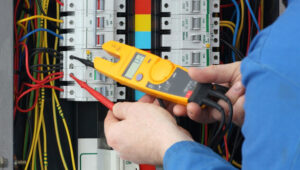Debris removal is a key component of any demolition project. Efficient junk removal helps keep the project on schedule and ensures safety for everyone involved.

Choosing eco-friendly methods for debris management reduces landfill waste and promotes sustainability. This can include salvaging materials for reuse or using deconstruction techniques that make room for new construction with less waste. Contact Paul’s Rubbish Removal and Demolition for professional help.
Although demolition and junk removal both involve removing unwanted materials, the nature of this waste differs significantly. Demolition debris and trash can contain hazardous substances that pose risks to human health and the environment if not handled properly. It is therefore essential to partner with a rubbish removal company that employs environmentally-conscious practices and prioritizes sustainability. A junk removal service provider can also offer a more comprehensive approach to rubbish disposal, including sorting, recycling, and responsible landfill disposal.
Unlike regular household trash, construction and demolition (C&D) waste cannot be placed at the curb on garbage day. It requires special care to handle and dispose of, as it contains bulky and heavy materials that are difficult to transport and recycle. This type of waste can pollute the soil, water, and air, posing health hazards for humans and animals. It can also block waterways and pollute surface and groundwater, damaging natural ecosystems. Moreover, it can create breeding grounds for disease vectors.
Sustainable demolition practices reduce environmental impact by minimizing waste and pollution, reducing energy consumption, and utilizing recycled materials. They also encourage deconstruction methods to salvage valuable building components for reuse, which can save costs and reduce the need for new materials. They can also promote community engagement, enhancing corporate image and building trust amongst stakeholders.
Before starting a demolition project, it is important to check with local authorities for permission to make structural changes or to dispose of waste materials. This will help you avoid fines and potential delays in the project. It is also necessary to identify any historic buildings or areas that may be affected, as this could require a different permitting process. Obtaining the correct permits will ensure compliance with local laws and regulations, protecting the environment, preventing environmental impacts, and maintaining safety on site.
It is vital to partner with a rubbish removal and demolition company that practices eco-friendly waste management. They will work with you to plan and execute a waste disposal strategy that minimizes the impact of your project on the environment. They will also provide assistance with obtaining necessary permits and adhering to local laws. They will also coordinate with other professionals involved in the project, ensuring that everyone is on the same page. This will result in a smoother project, avoiding delays and costly mistakes.
Cost-Effective
Construction and demolition projects generate a lot of waste materials, such as concrete, metal, wood, and general debris. This waste is usually dumped in landfills, but there are other ways to dispose of it responsibly and cost-effectively. Using a contractor who offers waste removal and recycling services can help you avoid high disposal fees and unnecessary expenses.
The right rubbish removal and recycling service will offer a wide variety of garbage bins, mini-bins, waste containers, dumpsters, and other rubbish removal options. These can be used for commercial and residential waste removal, including hazardous waste. They will also recycle or junk as much of your waste as possible to reduce the amount of trash sent to landfills. This can save you money on disposal fees and improve your environmental impact.
Managing rubbish and waste can be a huge challenge for many home owners, especially those who live in small spaces. Hiring a professional rubbish removal company can help you keep your home clean and organized, saving you time and effort. Besides, they have the proper equipment to handle large or bulky waste items that you may not be able to manage on your own.
Removing waste properly requires careful planning and coordination. This includes creating a schedule for regular garbage collection and implementing an efficient waste management system. For instance, the team at Junk Bee Gone will use specialized dumpsters and equipment for different types of rubbish. This will allow them to streamline the waste disposal process, ensuring that your demolition project runs smoothly and efficiently.
In addition to reducing the costs of landfill disposal, effective building rubbish removal can reduce the risk of health hazards and boost productivity at the construction site. Accumulated wastes present tripping hazards and can expose workers to pests and vermin. In addition, it can prevent the smooth flow of work and lead to delays in the project timeline.
A responsible rubbish removal and recycling strategy will also minimize the need for new raw materials, thereby reducing procurement costs. Moreover, it will help in preserving natural resources and reducing carbon emissions by eliminating the need for extracting and manufacturing virgin materials.
Reliable
When you want a rubbish removal company that is reliable and efficient, look no further than Z Best Rubbish Removal. They provide dumpsters in a variety of sizes to accommodate a wide range of projects, including garage cleanouts and entire home cleanouts. They also specialize in construction site garbage removal, clearing debris from job sites to keep projects on schedule and ensure safe, clean workspaces. Their reliable and affordable services make them a top choice for commercial and residential clients alike. Contact them today to schedule a free estimate. You won’t regret it. – Yelp user. Located near Park Slope Brooklyn.
Timely
Whether tackling a minor rubbish removal job or demolition project, you need to have a professional team that is capable of clearing out debris and waste in a timely manner. Ideally, the process should be conducted in accordance with regulatory requirements and safety standards. This will ensure that you have a clean and safe work environment without any delays.
Building sites generate a significant amount of waste, from demolition debris to packaging materials. This is an essential part of the construction process, and effective waste management is crucial for achieving progress and productivity. To achieve this, builders should adopt a just-in-time approach to rubbish removal, prioritising disposal services based on workflow requirements and timelines.
Timely rubbish removal and demolition services ensure that construction projects run smoothly and efficiently. It minimises hazards and risks associated with accumulated waste, such as tripping, exposure to hazardous materials, and increased pest and vermin infestation. It also creates a clean and safe workspace for construction workers, allowing them to streamline operations, optimise workflow, and focus on core construction activities.




